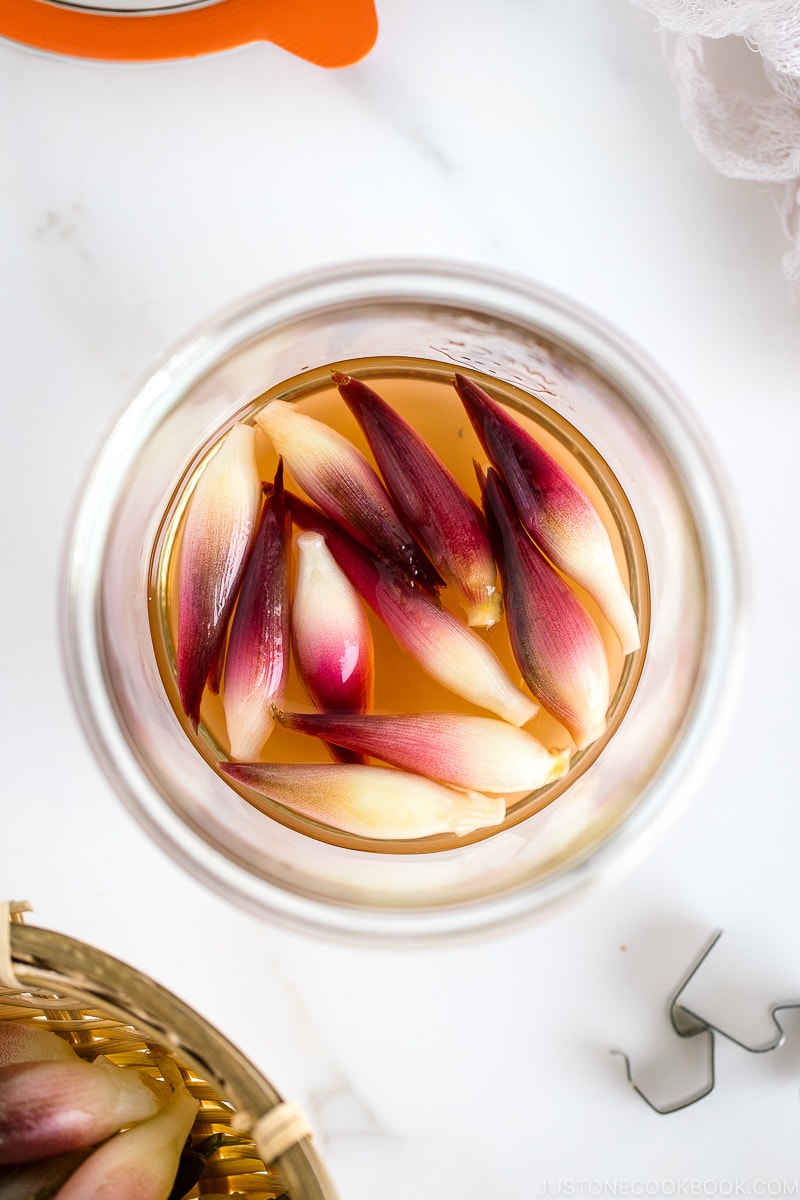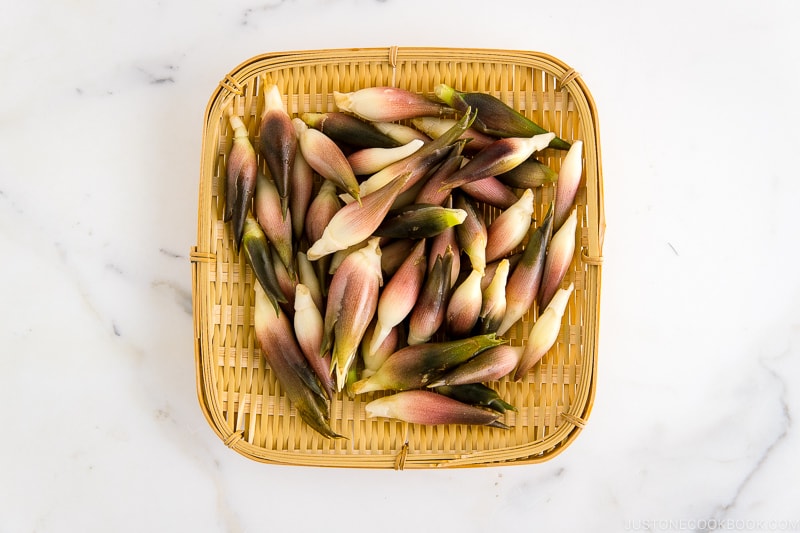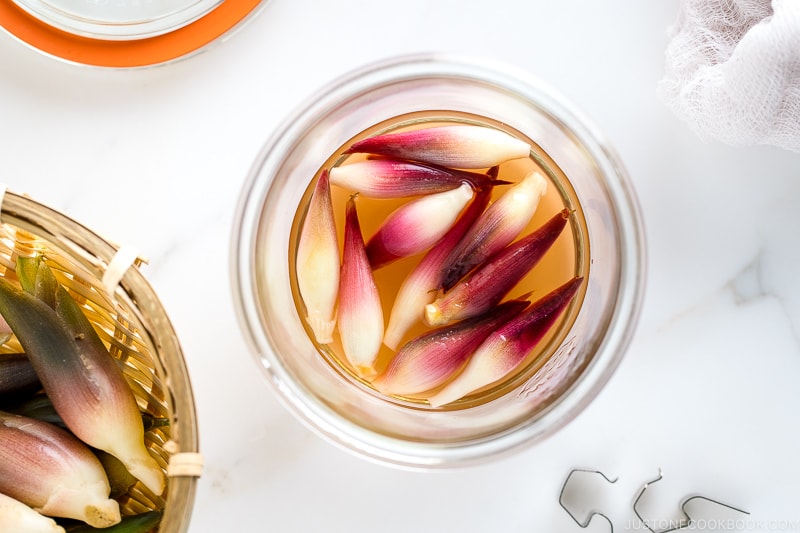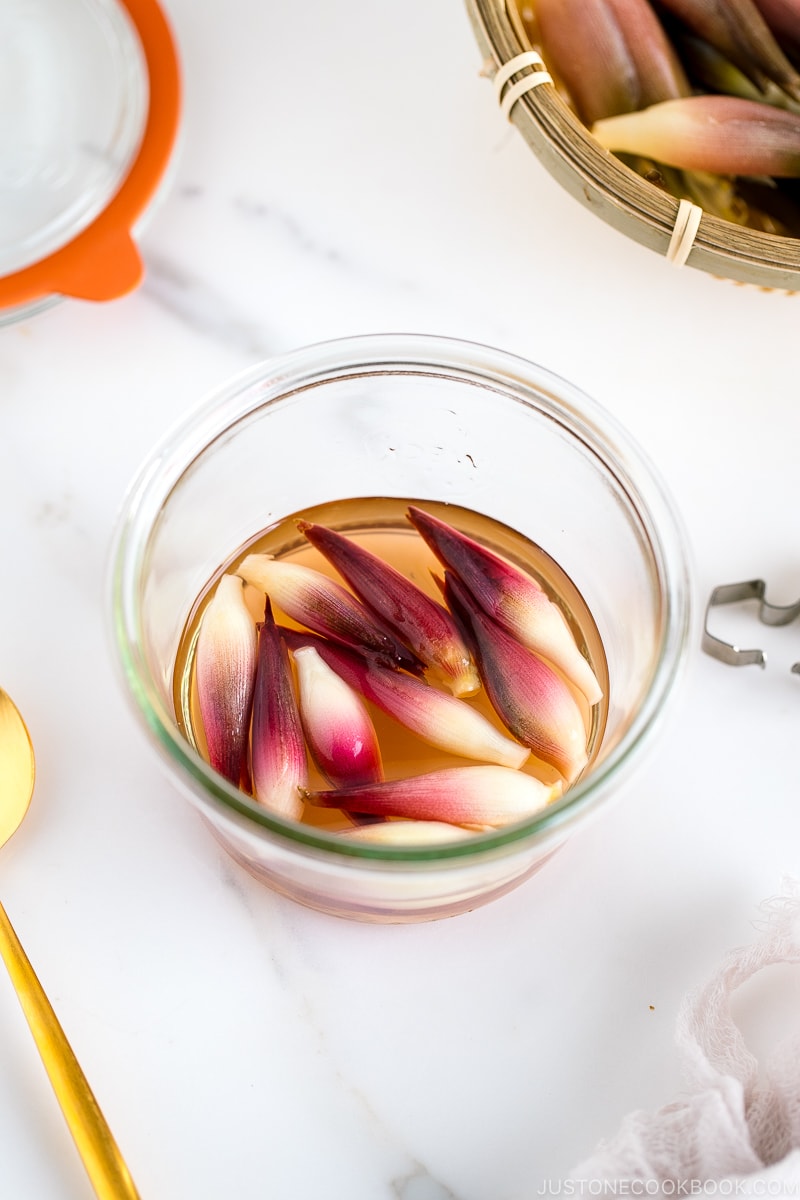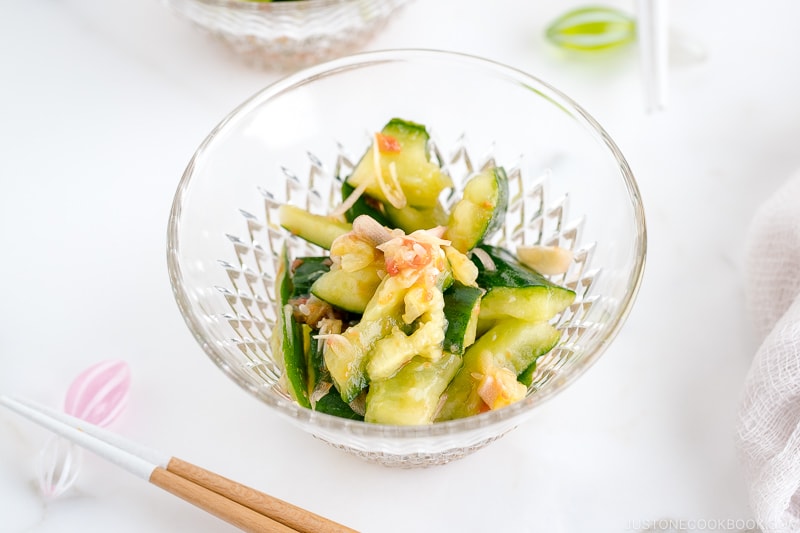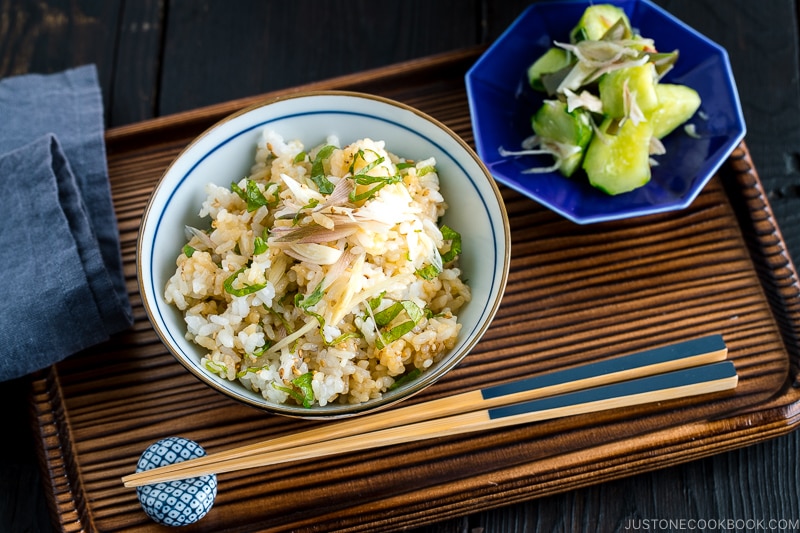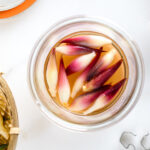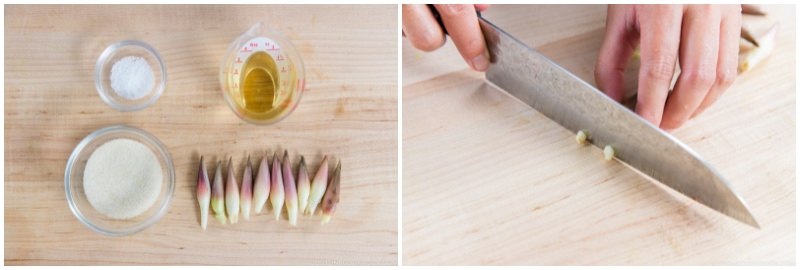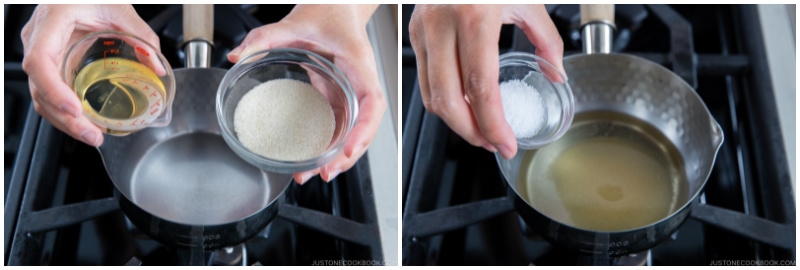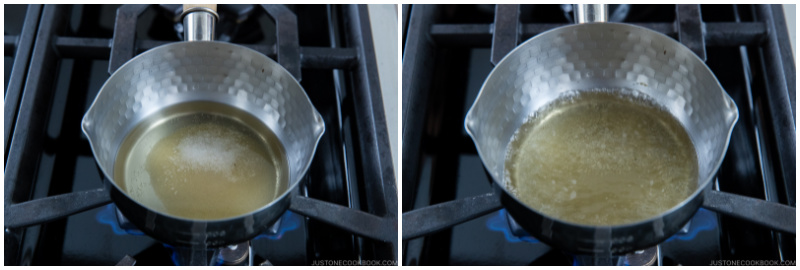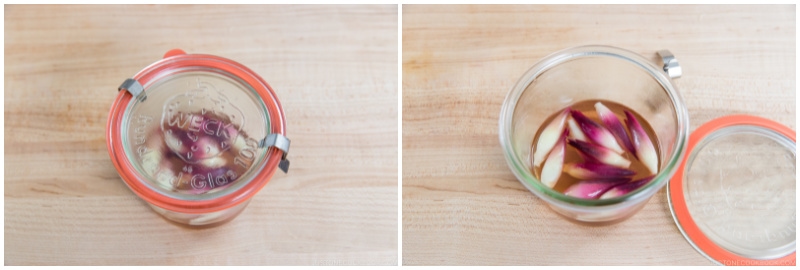I received homegrown myoga as a gift from a local JOC reader and have enjoyed making all kinds of myoga recipes. This one for Myoga Amazuzuke (みょうが甘酢漬け), or Sweet Pickled Japanese Ginger, is my particular favorite. It’s my family’s most-loved pickle in the summertime! It’s tasty on its own, and it also makes a lovely accompaniment to jazz up our salads and rice.
What Is Myoga (Japanese Ginger)?
Myoga (ミョウガ, みょうが, 茗荷) is the species Zingiber mioga in the Zingiberaceae family. Native to Japan, China, and Korea, myoga is harvested for its unopened flower bud and flavorful shoot instead of its root. The flower buds are slightly larger than thumb-size and have pinkish bronze outer layers. It is sometimes called myoga ginger or Japanese ginger. You can read more about it on my myoga pantry page.
What is Amazuzuke?
Amazuzuke (甘酢漬け) is a Japanese technique of pickling fresh vegetables in sweet vinegar. The name refers to the sugar and rice vinegar (amazu) solution used for pickling (zuke). It is one of the very basic Japanese pickles known collectively as tsukemono (漬物). You might be familiar already with the most well-known example of an amazuzuke—pickled sushi ginger or gari (ガリ). If you’re interested in learning more about different types of tsukemono, read my post Tsukemono: A Guide to Japanese Pickles.
Ingredients You’ll Need
The sweet pickling solution is made with 4 simple ingredients:
rice vinegar — it has a mild, tangy taste compared to other types of vinegar sugar — adjust the amount as you like; store-bought tends to be sweeter kosher salt myoga (Japanese ginger)
Substitutions and Variations
Can’t get myoga? Try using other vegetables! First slice the vegetables and sprinkle salt over them to draw moisture out before pickling. After 10–15 minutes, squeeze to remove the moisture. Then, pickle in the solution. See the list below for other vegetables to try:
carrot cabbage cucumber daikon radish kabu (Japanese turnip) renkon (lotus root) red onion yellow/red/orange bell pepper
How to Make Sweet Pickles (Amazuzuke)
That’s it! Easy, right? The pickled myoga will turn a beautiful pink color after a few days.
How to Enjoy Myoga Amazuzuke
Tangy and refreshing, this sweet pickled Japanese ginger is so versatile. Enjoy it whole or sliced with:
BBQ spreads cold summer noodles like somen grilled seafood or meat salads, lettuce wraps, or rice Japanese-inspired sandwiches (I haven’t tried it, but I think it would taste delicious! Let me know in the comments if you try this!)
Other Myoga Recipes You’ll Love
Love myoga ginger? Try these varieties of myoga recipes:
Mizuna Myoga Salad with Ponzu Sesame Dressing Pickled Cucumbers and Myoga Myoga Shiso Rice Eggplant and Myoga Salad Tomato Myoga Salad
Wish to learn more about Japanese cooking? Sign up for our free newsletter to receive cooking tips & recipe updates! And stay in touch with me on Facebook, Pinterest, YouTube, and Instagram.
